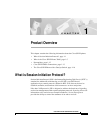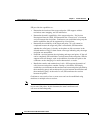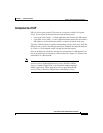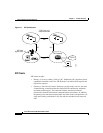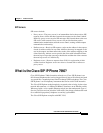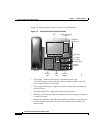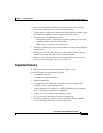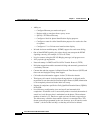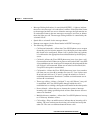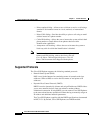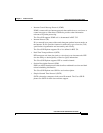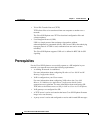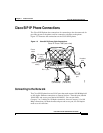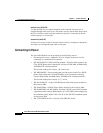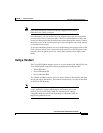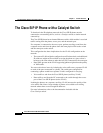
1-9
Cisco SIP IP Phone 7960 Administrator Guide
78-10497-02
Chapter 1 Product Overview
What is the Cisco SIP IP Phone 7960?
•
Message Waiting Indication (via unsolicited NOTIFY)—Lights to indicate
that a new voice message is in a subscriber’s mailbox. If the subscriber listens
to the message but does not save or delete the message, the light remains on.
If a subscriber listens to the new message or messages, and saves or deletes
them, the light goes off. The message waiting indicator is controlled by the
voicemail server.
•
Speed dial to voicemail via the messages button
•
Remote reset support (via the Event header in NOTIFY messages)
•
The following call options:
–
Call forward (network)—Allows the Cisco SIP IP phone user to request
forwarding service from the network (via a third party tool that enables
this feature to be configured). When a call is placed to the user’s phone,
it is redirected to the appropriate forward destination by the SIP proxy
server.
–
Call hold—Allows the Cisco SIP IP phone user (user A) to place a call
(from user B) on hold. When user A places user B on hold, the 2-way RTP
voice path between user A and user B is temporarily disconnected but the
call session is still connected. When user A takes user B off hold, the
2-way RTP voice path is reestablished.
–
Call transfer—Allows the Cisco SIP IP phone user (user A) to transfer a
call from one user (user B) to another user (user C). User A places user
B on hold and calls user C. If user C accepts the transfer, a session is
established between user B and user C and the session between user A
and user B is terminated.
–
Three-way calling—Allows a “bridged” 3-way call. When a 3-way call
is established, the Cisco SIP IP phone through which the call is
established acts as a bridge, mixing the audio media for the other parties.
–
Do not disturb—Allows the user to instruct the system to intercept
incoming calls during specified periods of time when the user does not
want to be disturbed.
–
Multiple directory numbers—Allows the Cisco SIP IP phone to have up
to six directory numbers or lines.
–
Call waiting—Plays an audible tone to indicate that an incoming call is
waiting. The user can then put the existing call on-hold and accept the
other call. The user can alternate between the two calls.



